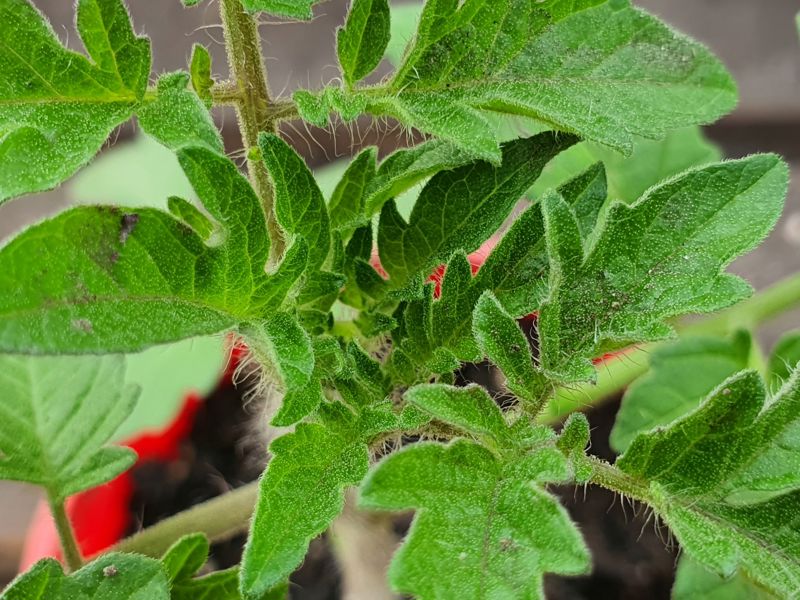Hello lovely gardeners
My collection of seedlings in the greenhouse is visibly growing by the day. I haven’t started any new seeds for at least a week. But what started off in a few small seed trays has exploded into a lot of the shelves in my greenhouse holding seedlings that have been transplanted out of the seed raising mix and into their own pots, and for my tomatoes, I’ve done that twice already because they just keep getting bigger!
But when you stop and think about it, the seeds were so small and the first seedlings that emerged were so tiny. The capacity for plants to grow from such small objects to something potentially enormous is quite mind blowing.
So how does it work? What makes them grow?
I don’t know how much you remember from biology at school, but a good basic knowledge of what makes plants grow helps you to know how to provide for them on their journey.
Programmed inside each cell of the plant is the basics for life. In the cell are a few bits and bobs that are good for gardeners to know about.
Vacuole – this is a little bag of water, sugar, starch, and some waste products. And it helps to keep the cell the right shape. However, if the plant doesn’t get enough water then the vacuole dries out and the plant wilts.
Chloroplasts – this is where the business of photosynthesis happens. Where the plant takes water, oxygen and sunshine and magically turns it into energy in the form of sugar and carbon dioxide as a waste product. This is what gives the plants the energy they need to do all that growing.
There are other cell contents that the plants need – like the nucleus with the DNA that acts a bit like the brain and mitochondria that manage the energy, so it gets to where it needs to be and in a form that is useful to the task.
Another microscopic part of plants that is good to know about is the cell wall structure. It is made up of cellulose fibres to protect the contents of the cell. It is like a fine mesh that lets the cell expand and contract as needed. And this is what keeps the plant upright and strong – along with the pressure from within the cell. And all the cells are glued together with calcium pectate which is strong but flexible.
Plants can grow by stretching their cells and this is what happens when plants reach for the light, but for long term growth the cells divide, fuelled by the energy from photosynthesis and the nutrients pulled into the plant from the soil through the roots.
The roots don’t stop growing either and they are constantly stretching and dividing as they seek out water and nutrients. The biggest job they have is to find water. The nutrients are taken into the plant via the water in some kind of aquatic conveyor belt.
Once inside the root the water and nutrients are moved into the vascular bundle that reaches from root tips to leaf tips. The water goes up through the xylem which is like an open pipe with small holes in the side like elevator doors to access the cells. It is important to make sure plants get enough moisture so there is enough pressure to push the water up the xylem to reach the top of the plant. If there isn’t enough then the top wilts.
There is a pipe system that goes the other way and takes the sugar and energy from the leaves and distributes it throughout the plant, down to the roots.
This doesn’t even scratch the surface of how plants work. It is a vastly complex network of some pretty amazing bio tech that keeps plants working. But as a gardener, knowing how things works means you can appreciate what needs to be done to keep plants happy.
If there are only three things we can do for plants they are:
1. Give them good access to sunshine,
2. Don’t let the water supply run dry and
3. Make sure they are able to access nutrients in a form they can draw in through the roots – although you can get worms and fungi to help out there.
I hope this is useful to you. In my garden I am still prepping beds and potting on seedlings, but I’m getting there… one day…
My current favourite Yates product that helps me with my bed prep is Thrive Natural Blood & Bone with Seaweed. I like that it is natural source of organic slow-release nutrients for healthy plant growth and has the added benefits from the seaweed.
https://www.yates.co.nz/products/fertilisers-tonics/certified-organic/yates-thrive-natural-blood-bone-with-seaweed/
Happy gardening and as always – if you want to get in touch leave a comment below.
Sarah the Gardener : o)










Share
Share this blog on social media